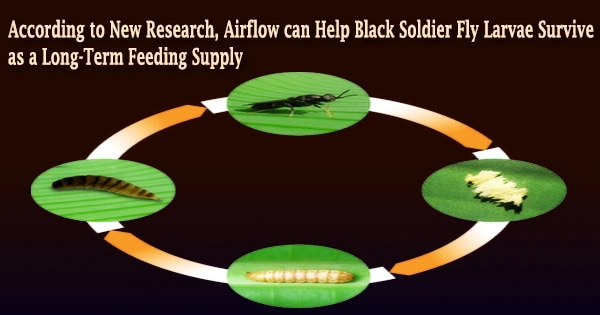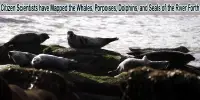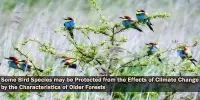Black soldier fly larvae eat food waste and other organic matter and are made up of 60% protein, making them a desirable long-term food source in agriculture. However, black soldier larvae are increasingly dying before they reach livestock facilities to be used as animal feed.
This species is endemic to the Neotropics, but it has expanded across all continents in recent decades, making it almost cosmopolitan. It can be found throughout most of the United States and Europe, including the Iberian Peninsula, southern France, Italy, Croatia, Malta, the Canary Islands, and Switzerland, as well as the Krasnodar Territory on Russia’s Black Sea coast. It can also be found in the Afrotropical, Australasian, East Palaearctic, Nearctic, North African, Southern African, and Indomalayan realms.
Recognizing that the trouble is the collective heat generated when maggots eat in crowded surroundings, Georgia Tech researchers discovered that giving the correct amount of airflow could assist address the overheating problem. Their research was published in Frontiers in Physics this month as part of a special edition on “Physics of Social Interactions.”
“Black soldier fly larvae are widely used in an emerging food-recycling industry. The idea is to feed the larvae with food waste and then turn them into chicken feed,” explained first author Hungtang Ko, a Ph.D. student in the George W. Woodruff School of Mechanical Engineering. “These larvae make a great candidate for this process because they eat just about everything.”
Humans squander more than one billion tons of food each year, accounting for a third of all food production, and many countries are running out of ways to dispose of it. There is a lot of information regarding these flies or larvae that is unknown. The soldier fly is one of 2,700 different species.
The majority of fly species spend the majority of their lives in water, however, some flies survive on land. The larvae flourish in and around compost piles, where they aid in the decomposition of organic matter such as rotten vegetables, animal leftovers, and manure.
Black soldier fly larvae are widely used in an emerging food-recycling industry. The idea is to feed the larvae with food waste and then turn them into chicken feed. These larvae make a great candidate for this process because they eat just about everything.
Hungtang Ko
According to David Hu, a professor in the School of Mechanical Engineering, black soldier insect larvae can grow to be 1,000 times their original size. Black soldier fly larvae (BSFL) are also a viable protein source for aquaculture, animal feed, pet food, and human nutrition.
“It’s like going from the size of a person to the size of a big truck,” he said of the larvae’s growth from eggs to adults.
Hu featured on Science Friday with a graphic depicting the insatiable hunger of black army fly larvae, which may consume twice their body weight in food in a single day. However, when maggots dine in close quarters in container bins, they generate metabolic heat, which can be fatal to them.
Air Flow Matters
The experiments were set up in collaboration with Daniel Goldman, a Dunn Family Professor in the School of Physics. Goldman use fluidized beds, which are commonly seen in industrial applications such as oil refining. In animal and robot movement investigations, to control the properties of a granular medium.
Fluidized beds work by pushing a vertical flow of fluid through a collection of particulate matter; once the flow rate reaches a specific level, the grains shift from a solid pile to a fluid-like arrangement, colliding and jostling.
The larvae were placed in a container with constant airflow and a constant temperature. They then connected a leaf blower to the chamber’s air supply and ran five-minute experiments manually ramping up and down the airspeed.
The collectives’ behavior under air fluidization varies from that found in traditional fluidized beds because of the larvae’s continual activity: larvae were un-jammable when airflow got low. They act more like a fluid that adapts and adjusts to external influences.
“An interesting aspect of this work is that it probes a regime of ‘active matter,’ which has received less attention from physicists: Instead of 3D swarms composed of widely separated, non-colliding flying birds and insects, our ‘swarm’ exists in another regime, where animals are packed tightly together,” Goldman said.
The team utilized x-ray imaging and constant airspeed in a second experiment to see how fast larvae consume. Ko assessed the larvae’s average velocity and pressure, as well as how much food they ate, at different airflow speeds.
“As you continue to increase the flow, you’ll reach a point where all the larvae are flying through the air. The airflow is too fast, and they won’t eat well,” he said.
The larvae will be suitably chilled while still being able to eat successfully if the air velocity is optimal.
“Probing optimal flow velocity will be a good next step. Also, from an engineering perspective, we need to consider other ways that we can cool the larvae down, including using heat transfer,” he added.
The findings showed that when larvae are agitated by quick flows, they are more likely to float in mid-air without hitting the food, implying that a moderate flow rate is best for feeding dense clusters of larvae.
The researchers also expect that this effort will make black soldier fly larvae more widely available as food waste recyclers, which total 1.3 billion tons per year, according to the United Nations Food and Agriculture Organization.
However, the ability of these protein-rich insects to lower the carbon footprint of feeding animals is also essential.
According to a study published in September in Nature Food, global food production produces more than 17 billion metric tons of human-made greenhouse gas emissions each year. According to the study, animal-based diets emit more than twice as much as plant-based ones.
“There’s no sustainable protein source for the animals that we eat,” noted Ko. “The black soldier fly larvae could play a role in reducing the environmental impact of feeding these animals.”
















